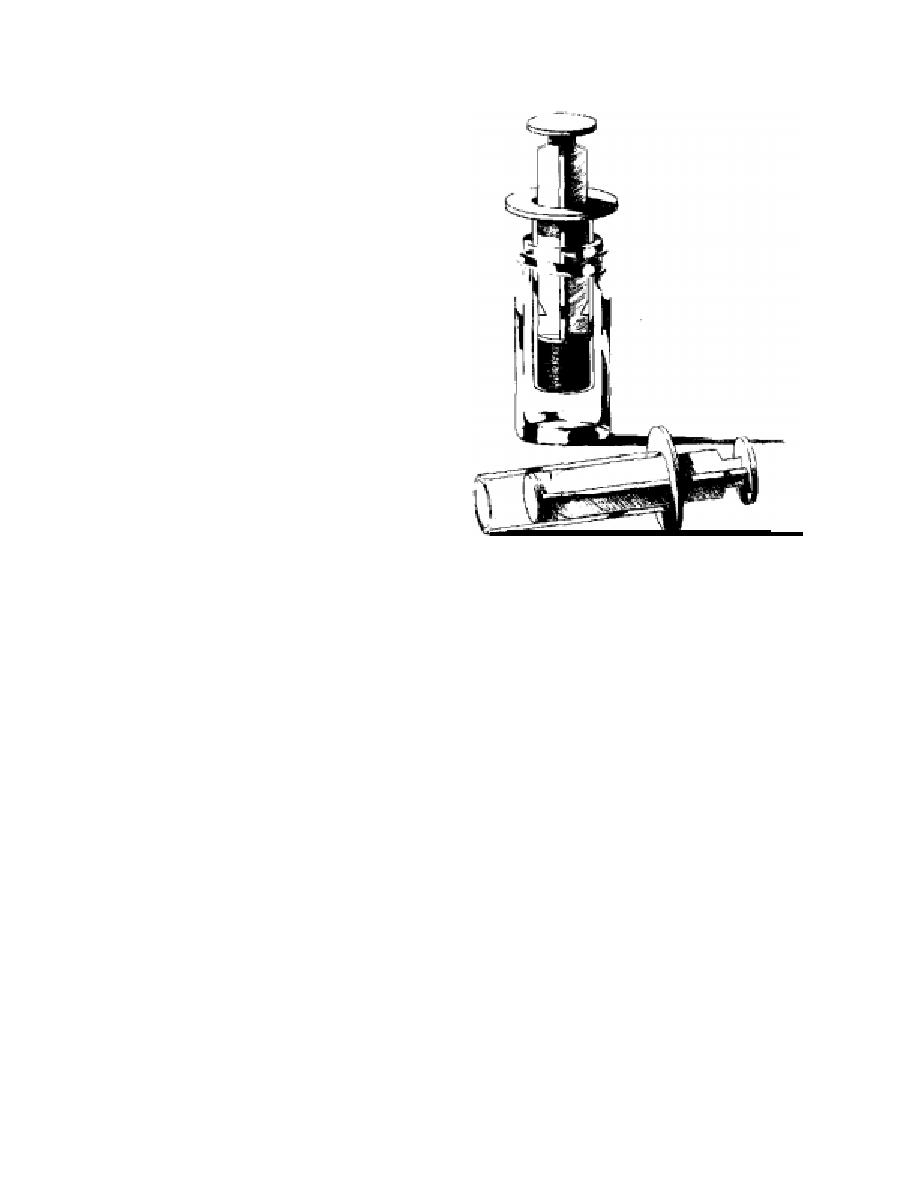
evaluates this device for the transportation and
extended storage of samples along with covered
core barrel liners and empty volatile organic analy-
sis (VOA) vials (proposed by U.S. Analytical Labo-
ratory, Kimberly, Wisconsin). Core barrel liners are
open-ended tubes that fit inside a subsurface sam-
pler; after filling by pushing into an previously
undisturbed formation, the liners are covered al-
lowing a bulk sample to be transported and stored.
The En Core sampler and the empty VOA vial
serve as chambers for the transportation and stor-
age of discrete samples. The practices used to as-
sess these sample transportation and storage de-
vices are intended to comply with the current EPA
and ASTM guidance, even though they may not
be implicit to these documents. Furthermore, these
experiments will attempt to determine whether
storage at 12 3C is a favorable method of
sample preservation. A general description of how
the samples would be transported, stored, and
prepared for analysis follows.
SAMPLE TRANSPORTATION AND STORAGE
AND PREPARATION PROTOCOLS
Figure 3. Modified 10-mL syringe and empty VOA vial.
Syringe modified by removing tip and rubber plunger
Core barrel liners
cap. (Commercially available from U.S. Analytical
Subsurface soil samples are usually obtained
Laboratory, Kimberly, Wisconsin.)
with a hollow tube designed to collect an intact
cylindrical core of material. Coring tubes typically
cloth so as not to leave particles on the sealing edge
range in size from 2.5 to 10 cm in diameter, and 25
of the sample preparation/analysis vial. Further-
to several hundreds of centimeters in length. Core
more, the coring tool used for this subsampling
barrel liners fit snugly within these coring tubes
step needs to have a smaller outer diameter than
and come in a variety of sizes and materials (stain-
the opening of the sample vial.
less steel, brass, Teflon, rigid plastics, etc.). Only
core barrel liners made out of metal have been rec-
ommended for transportation and storage of
En Core Samplers
The En Core sampler is available in two sizes
samples for VOC analysis (ASTM D 4547-91). Once
allowing for the collection and storage of either a
filled and returned to the surface, the ends of a
5- or 25-g soil sample. Only the 5-g sampler was
core barrel liner are covered with either a thin sheet
evaluated in this study. This precleaned device,
of Teflon or aluminum foil. To hold these sheets in
composed of an inert composite polymer with
place, plastic caps are pressed over the ends and
Viton O-rings to form vapor-tight seals, is intended
in some cases an adhesive tape is also applied.
for a single use. To use this sampler the coring/
These bulk samplers are transported and stored
at 4 2C prior to the removal of a subsample in
storage chamber is attached to a metal handle (Fig.
4) and, with the plunger in the forward position
preparation for analysis. Subsampling is done
(unsealed), the bottom of this tool is pushed into
through the core ends by (1) removing the cover-
a freshly exposed surface until it is filled. Once
ings, (2) removing a few centimeters of soil, and
the sampler is removed the exterior surfaces are
(3) using a small coring tool, such as a modified
wiped clean and the cap is installed. The sampler
10-mL or smaller syringe (Fig. 3) to transfer a
is then returned to a foil bag and held at 4 2C.
subsample to a VOA vial prepared for either di-
When the sample is prepared for either direct va-
rect vapor partitioning analysis or MeOH extrac-
por partitioning (purge-and-trap or headspace)
tion. After the syringe is removed from the bulk
analysis or MeOH extraction, the sampler is at-
sample, the exterior walls are wiped with a clean
4



 Previous Page
Previous Page
